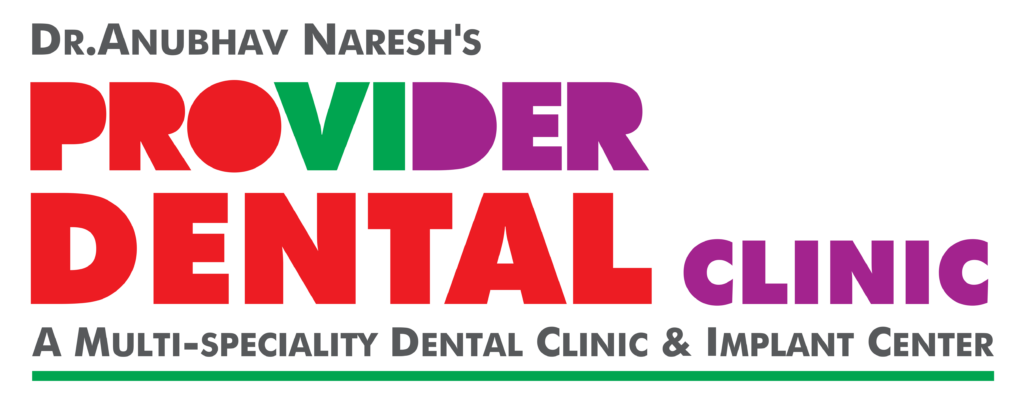Cosmetic dentistry is generally used to refer to any dental work that improves the appearance (though not necessarily the function) of a person’s teeth, gums and/or bite.
Cosmetic dentistry involves procedures such as whitening or tooth bleaching, tooth reshaping, bonding (a process in which an enamel-like dental composite material is applied to a tooth’s surface, sculpted into shape, hardened and then polished), dental bridges, veneers, gum lift etc.
Cosmetic Dentistry (Redesigning Smiles)
Endodontics (Root Canal Treatment)
Endodontics literally means dentistry within the tooth itself. Root canal therapy fits within this special area of dentistry. The root canal procedure deals with the nerve of the tooth, which is housed in the pulp chamber and in the canal within the root. A root canal is performed when the nerve is to diseased to be saved and must be removed. Pulp disease usually means that one will lose the tooth unless something is done to save it. Root canal therapy involves replacing the diseased or dead pulp with a substance that will help preserve the function of the tooth. Modern techniques have made this tooth saving procedure much more acceptable than in the pas
Periodontics (Treatment for Gums)
It means the branch of dentistry dealing with health & disease of tissues investing and supporting the teeth. Four basic tissues compose the complete periodontium
- Gingiva (The Gums).
- Cementum (The layer covering the root of the tooth).
- Periodontal ligament (soft tissue cushion between the tooth root and bone holding the tooth).
- Alveolar bone (part of jaw bone which is housing the tooth root).
Pediatric Dentistry (Child Care)
It is the branch of dentistry dealing with children from birth through adolescence. Pediatric Dentistry places special importance in preventing tooth decay. Studies show that poor oral health care in children can lead to impaired school performance and poor social relationships. Additionally, Pediatric Dentists work toward the maintenance of primary teeth (baby teeth/milk teeth) until they are naturally lost. This is due to the importance they serve in permitting children to chew properly and therefore maintain good nutrition, their role in speech development, and the maintenance of space for the eventual eruption of the permanent teeth.
Prosthodontics (Replacing Missing Teeth)
It is also known as dental prosthetics or prosthetic dentistry. It is the dental specialty pertaining to the diagnosis, treatment planning, rehabilitation and maintenance of the oral function, comfort, appearance and health of patients with clinical conditions associated with missing or deficient teeth and/or oral and maxillofacial tissues using biocompatible substitutes. Commonly, in layman terminology, this is the branch of dentistry dealing with removable and partial dentures and fixed prosthesis like crowns, bridges etc.
Conservative Dentistry (Filling Decayed Teeth)
Conservative dentistry deals with routine dental procedures of cleaning and filling a decayed tooth, sealing of pits and fissures in children as well as adults, and application of agents that help in prevention of further decay of a tooth or which help in inhibiting tooth decay.
Implants (Placing Artificial Teeth)
A dental implant is a “root” device, usually made of titanium, used in dentistry to support restorations that resemble a tooth or group of teeth to replace missing teeth. Virtually all dental implants placed today are root-form endosseous implants, i.e., they appear similar to an actual tooth root (and thus possess a “root-form”) and are placed within the bone. Dental implants can be used to support a number of dental prostheses, including crowns, implant-supported bridges or dentures. They can also be used as anchorage for orthodontic tooth movement.
Oral and Maxillofacial Surgery (Removal of Tooth)
This branch of dentistry is not just limited to extracting a decayed or an impacted tooth, but it encompasses a wide spectrum of diseases, injuries and defects in the head, neck, face, jaws and the hard and soft tissues of the oral and maxillofacial region. It includes the diagnosis, surgical and related treatment of diseases, injuries and defects involving both the functional and esthetic aspects of the hard and soft tissues of the head, mouth, teeth, gums, jaws and neck.
Orthodontics (Straightening of Teeth)
It is the first specialty of dentistry that is concerned with the study and treatment of malocclusions (improper bites), which may be a result of tooth irregularity, disproportionate jaw relationships, or both. Orthodontic treatment can focus on dental displacement only, or can deal with the control and modification of facial growth. In the latter case it is better defined as “dentofacial orthopaedics”. Orthodontic treatment can be carried out for purely aesthetic reasons with regards to improving the general appearance of patients’ teeth.
